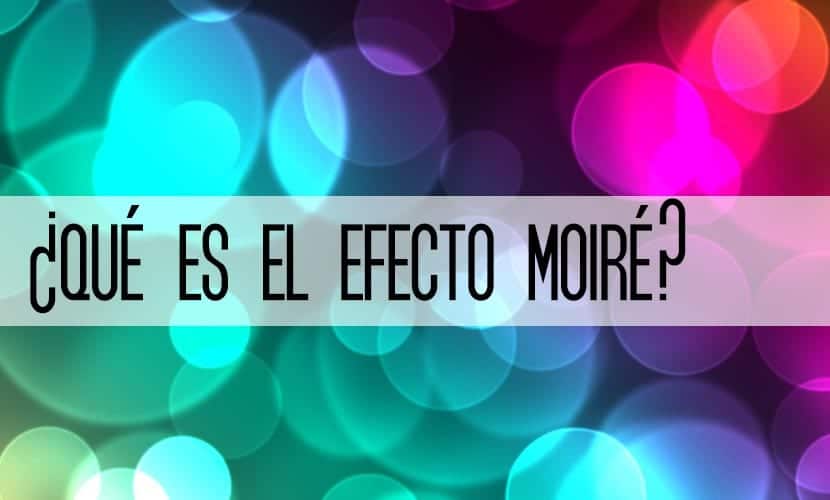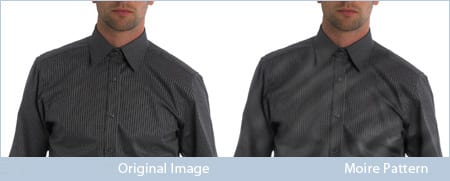
Surely you have heard it more than once, and surely you have also seen it many times on television, video or photography. The Moirè effect occurs when we perceive the interference of two gratings of lines that are arranged at different angles or of different sizes. In other words, it occurs when two different line or shape patterns overlap one another forming an unwanted visual effect that is unfortunately impossible to eliminate. If in analog photography it is perhaps less noticeable, the Moirè effect is especially noticeable in digital photographs. This is due to the very nature of the sensor of a digital camera, since it is basically made up of a grid of pixels.
You can see it more clearly in the animation of this page. You have seen it more than once on television when a presenter is wearing a houndstooth or tweed suit. It also occurs when we reproduce or copy a photograph already printed.
The name of this effect has its origin in the name of the photographer who discovered it, Ernst Moire, which was of Swiss origin. This is not a phenomenon independent of the size of the object that suffers it. On the contrary, it is in an absolutely direct relationship. This means that a photograph that shows moirè reproduced on a monitor with a resolution of 1024 × 768 pixels may not show it if we reduce it a little and it may show it again if we continue to reduce it. What is clear is that the screen of our computer or our camera not reliable enough if our project is destined in paper format. We will not accurately check for this error until we have printed it out.
As the moirè is the conflict between two repetitive motifs, if the size relationship between these motifs varies, the moirè appears or disappears in an unpredictable way. This means that before an image that could show it when printed, the only way to know if it is going to suffer it or not is to print it at the same size and lineatura at which it is wanted to reproduce. What we see on the monitor is useless. What we get printed at a different lineatura and size, either. The truth is that the cameras incorporate el low pass filter which is responsible for smoothing the image, although in general it is usually too intrusive in most.

The moiré in photography is uncommon to notice, perhaps on TV it is noticeable a little more but the effect that is diluted by the speed of the scene or the viewer does not notice it absorbed by the plot.
On the other hand, in graphics, it is very noticeable because the image with moiré is static and this is produced by the wrong angle of some of the so-called "strong" (or dirty) colors such as magenta, cyan and black, yellow is Excellent for being a color «clean and of little force. What I am referring to is the following, in printed graphics, (the plot), yellow has an angle of 90º, magenta 45º, cyan 75º and black 15º. , on the other hand, yellow can be changed at any angle without producing the aforementioned effect, unless the printer tower has been used for another color and has not been cleaned correctly, that is, residues of the previous color remained and the yellow ink was « get dirty »and take strength.
Comment from Ernesto Ranieri, associate professor of graphics at OPEN DC and future professor of 2D and 3D analog and digital photography. .
regards